Failure is always a possibility when trying to accomplish anything.
Whether you’re trying to land a job, pass an exam, or start a business, you’re always in danger of having all your hard work catastrophically blow up in your face. Speaking of business, this is especially true for the numerous and highly ambitious failed startups. Have you been reading the news lately?
If so, you may have heard about WeWork, an American real estate business catering to startups that’s currently hemorrhaging billions of dollars. You might have also seen headlines discussing the poor performance of marijuana businesses in Canada, California, and Colorado.
What kind of picture do these news stories paint about the current state of startups?
A company who’s key clientele is other startups can’t stay afloat. Furthermore, the much-touted “new gold rush” is yielding diminishing returns in areas that appeared most promising for new business. When looked at in this way, it’s not unreasonable to assume that it’s a tough time for startups.
But is it really this bad? I don’t think so!
Although it can seem like the current state of small businesses and startups is doom and gloom, the truth is that we’re living in a golden age for entrepreneurs. And the key to understanding this is to learn why so many startups fail in the first place.
Keep reading and you’ll see why startup failure is so common, an objective data-driven look at the real state of modern startups, and some tips on a successful startup business model.
See the Top CPA Review Courses
- 1. Becker CPA Review Course ◄◄ Endorsed by Big 4 Accounting Firms + Save $1,331
- 2. Surgent CPA Prep Course ◄◄ Best Adaptive Technology
- 3. Gleim CPA Study Materials ◄◄ Largest CPA Test Bank
[uam_ad id=”7978″]
Why Do Startups Fail? (The 3 Main Reasons)
Below are some specific reasons that a startup might end up closing its doors. Keep in mind that this isn’t a complete list, and some of these aren’t the most common reasons for startup failure; those will be covered later. However, these are illuminating case studies that offer educational value for any entrepreneur looking to avoid — or recover from — startup failure.
1. Failure to Leave Orbit
Obviously, all businesses are created with the eventual goal of being profitable. However, startups are a bit more conceptual when it comes to obtaining these profits. Instead of focusing on short-term gains, these companies often play the long game and look to carve out pieces of a future market that’s theoretically much more lucrative. Think of it as a rocket ship; the investors provide money as ‘fuel’ to help it leave the launchpad with the assumption that it will eventually leave orbit and sustain itself with its own cash flow.
The best example of a successful startup that had poor returns in the short-term is 
Although this strategy is a gamble, the high risk comes with the promise of high reward. As a CNBC article describing Accel Partners’ substantial 2005 investment put it, “Not everyone at Accel was enthralled with the idea of investing in a site that had less than 3 million users and no clear revenue path. But that initial investment—now worth as much as $6.6 billion—is looking like a pretty good deal.”

On its surface, this business seemed to have the consumer appeal and disruptive nature that Facebook did, which is likely what enticed investors such as Studio Movie Grill and Helios and Matheson Analytics. However, their plans were met with severe opposition from movie theaters and studios, resulting in a class-action lawsuit and eventual closure.
2. Failure to Pivot
Clearly, investors are an extremely important aspect of any startup’s success. But what makes a startup so appealing to investors? Among other things, one benefit provided by a startup that isn’t typically found with legacy organizations is adaptability. Ultimately, a startup is like a receiver or running back on a football field; they need to be able to quickly pivot to avoid being tackled.

“DVDs will continue to generate big profits in the near future. Netflix has at least another decade of dominance ahead of it. But movies over the Internet are coming, and at some point it will become big business…. We want to be ready when video-on-demand happens. That’s why the company is called Netflix, not DVD-by-Mail.”
On the other hand, an excellent example of a startup that failed to pivot and eventually 
A CBS News article from 2012 provides insight into what caused StumbleUpon’s luck and success to sour. It appears that they were in competition with Pinterest at the time, since it offered a similar user experience, increasing its influence and market share. They attempted to pivot with the addition of a ‘channel’ feature, but this seemed to benefit advertisers more than the users they were attempting to attract and keep. As a result, they began their downward slide and eventual failure.
 3. Failure to Lead
3. Failure to Lead
The previous two reasons for failure are notable because they result in some of the most high-profile cases of startup failure. However, these cases are only possible with the ability to attract investors in the first place, which is something that is very difficult for many startups to do. When analyzing the most common reasons for startup failure, the top three are a lack of market need, running out of money, and a poor team.
All three of these issues can be avoided with a capable leader. Think of the role like the captain of a pirate ship. In order to be successful, he or she needs to be able to navigate rough waters, manage a crew, and find treasure. In order for a startup to accomplish similar tasks, a leader needs to have enough experience without being set in their ways. There are countless variables and qualities that go into successfully leading a startup that make it just about impossible to fully explain. But here are some real-world examples that help paint a clearer picture.
One of the most lucrative (and challenging) industries in which to run a modern business is software development: especially video games. With the growth of crowdfunding platforms like Kickstarter, many new startups — and established businesses pivoting to the startup model — have attempted to capitalize on this investment strategy with varying levels of success. Ultimately, two high-profile examples of crowdfunded game development demonstrate the necessity of a versatile and experienced leader at the helm.
For an example of a success story, look at the history of Brian Fargo and inXile Entertainment. Due to his previous experience at Interplay, Fargo was able to build a solid team and stay in business through a variety of deals. This culminated in wildly successful Kickstarter projects for the games Wasteland 2 and Torment: Tides of Numenera, resulting in his company’s acquisition by Microsoft in 2018.
On the other end of the spectrum is the story of Peter Molyneux and 22Cans. Like Fargo, Molyneux is a veteran of the games industry who founded a new company in order to capitalize on the crowdfunding investment model. However, his Kickstarter project for the game Godus failed to deliver on its promises, key figures departed from his team, and he eventually handed over leadership responsibilities to a new CEO.
7 Critical Startup Statistics
Now that we’ve gone over some common reasons that startups fail, let’s look at the current state of startups. Despite all the doom and gloom mentioned so often in the news, are things really as bad as they seem? These seven statistics offer a more objective look at the situation, from a global scale to a national scale and all the way to industry-specific metrics:
1. Startup Formation Rate Worldwide
Where are new startups being formed? This chart from Statista outlines the 10 countries with the highest percentage of startups formed worldwide in 2018. As you can see, the top three countries with the most startups are Canada, the United States, and India. What does this information tell us about the state of modern startups?
For starters, this shows that the United States only represents one-tenth of all startups founded that year. To be fair, this is still a sizable chunk of all businesses created at that time; however, it implies that there’s much more going on outside the US than we may be aware of. Hence, startups struggling in this region doesn’t necessarily signify a global crisis, especially if they’re still doing well in Canada or India.
2. Startup Job Creation in the United States
What’s the current state of startup creation in America? This Statista chart provides information specifically focusing on the United States. Based on this information, it appears that the amount of new jobs created by startups is far below what it was at the turn of the millenium. Understandably, the lowest point of this graph coincides with the cataclysmic financial crisis of 2008 and 2009, when the subprime bubble burst and everyone lost a lot of money.
However, there is a silver lining here. It appears that growth has been steady and sustainable (possibly stagnant?) in the years following this financial crisis, with the total amount of American jobs created by startups in 2018 being a hair over 3.1 million. Additionally, the knowledge that a significant portion of startups are outside the US provides one possible hypothesis as to why we haven’t reached the same highs as the early 2000’s.
Learn More About The CPA Exam
- How To Become A CPA
- CPA Exam Stats and Facts
- Best Order To Take CPA Exam
- Motivational Songs For Studying
3. Startup Survival in the United States
How many new startups are staying afloat in the United States? To find this information, we consulted page 21 of the Kauffman Indicators of Entrepreneurship 2018 National Report. When compared to the previous chart, there appears to be an interesting relationship between startup creation and startup survival. Or rather, there appears to be an interesting lack of a relationship between the two!
Despite having a significantly higher rate of startups created in the late 90’s and early 2000’s, the startup failure rate and rate at which these startups survived has stayed mostly consistent into the late 2000’s and 2010’s. Predictably, there is a dip around the financial crisis of 2008 and 2009. However, this dip is extremely minor when compared to the dip in startups being created, and is essentially on a par with survival during times of economic prosperity.
4. Startup Exits in the United States (And The Rest of the World)
How many startup founders successfully exited their companies? Returning to Statista, we can see that a significant number of founders successfully exited startups in the United States, but a smaller portion exited in Europe and other parts of the world. This collection of data from the past few years offers another clue to the current state of startups, especially with regards to America.
Notice that despite no significant changes in the rates of startup growth or survival in the United States from 2016 to 2018, the amount of founders exiting these companies has been increasing in that same time period. Simultaneously, the amount of startup exits in other parts of the world have been decreasing; does this mean that business owners are “cashing out” of the United States?
5. Cannabis Startup Funding in the United States and Canada
What is the state of startups in the cannabis industry? As I mentioned earlier, there have been concerning news stories discussing struggles faced by this popular industry. However, it appears that these events haven’t stopped this industry from continuing to expand and attract investors over the past decade, as this chart from Statista demonstrates.
Starting from 2008, investor-backed growth moved at a snail’s pace. This is most likely due to a combination of the aforementioned financial crisis and the lengthy battles for marijuana legalization, both medicinal and recreational. However, after these hurdles were overcome, the growth has been steady and promising with no signs of slowing down. From this perspective, it appears that there’s still room for growth (and success) for cannabis startups in the US and Canada!
6. AI Startups Acquired Worldwide
Speaking of industries with attractive startups, it looks like the artificial intelligence industry is experiencing a similar level of success. Once again, Statista offers a helpful collection of data, but this time it’s related to a different industry. Additionally, instead of focusing on an early stage of a startup’s life cycle (VC funding), it offers some perspective for the later stage (acquisition and exit).
What’s the current state of AI startups? Much like cannabis startups, growth has been steady over the past decade. However, it appears that the amount of tech company acquisitions — and by extension, interest — in this industry has begun to dip. This could be due to a technological bottleneck or a lateral move into similar industries like machine learning. However, the implication seems to be that this particular industry is yielding diminishing returns for entrepreneurs.
7. Concerns for United States Startup Founders
Finally, what issues are startups actually facing? Based on survey data provided by Statista, we can see what concerns were on the minds of startup founders in 2018. And what this data shows us can offer insight into the most dire needs of modern startups — some obvious and some surprising.
For example, just over two thirds of American startup founders are primarily concerned with finding the right talent for their startups. This could be related to the growing globalization of startups making it difficult to hire talented workers when startups in other countries are also recruiting. However, the next two biggest concerns are less surprising, considering the fact that every business needs to focus on customers and revenue in order to survive.
Get Discounts On CPA Review Courses!

Enjoy $1,250 Off Gleim CPA Premium Pro Course
Key Takeaways
Now that we understand why startups fail and how they’re currently faring, we can arrive at some interesting conclusions. Let’s go over some takeaways about the present and future state of startups, both in the United States and around the globe:
Supply is Larger Than Demand
When considering how important a leader is to the success of a startup, one of their major responsibilities is organizing and managing a capable team. Unfortunately, what the data shows us is that this is a difficult thing for many founders to accomplish, which is why it ranks as their most pressing concern.
If you’re currently running a startup or are considering founding one, make sure you have the ability to organize a competent team. This isn’t something you can just figure out later; it needs to be your primary focus. However, understand that this isn’t going to be easy due to the high demand from other startups, both in your country and in other parts of the world.
 Go International
Go International
For a long time, it was possible (and mandatory) to restrict your business operations to your country of origin. However, globalization has caused the world to become more connected than ever before. For a startup founder, this is a double-edged sword; you’re facing more competition, but you also have access to more resources, team members, and customers.
A successful startup needs a good idea, a great leader, a fantastic team, a potential customer base, and the ability to attract investors. If you have one or two of these aspects but can’t figure out how to obtain the ones you’re missing, don’t be afraid to look in another country. Don’t be like WeWork and disproportionately target one expensive location in one country. Diversify!
Focus on Technology and/or Medicine
As the years go on, technology will continue to progress in fascinating and complex ways. Consequently, more challenges will be faced by modern businesses and individuals — meaning more opportunities for enterprising startups to offer creative solutions. If you have an affinity for tech and can keep up with current trends, industries like artificial intelligence and machine learning are excellent choices for your startup.
On the other hand, health and medicine are also going to become more important as time goes on. This helps to partially explain the rise in funding and popularity for medicinal cannabis startups, as well as other healthcare-related projects. This is an industry where demand has been steadily growing over the years, and it’s likely to continue doing so for quite some time. As a result, you could find considerable success forming a startup based on these issues.
Learn From Your Mistakes (And Don’t Give Up)
Of course, even the best laid plans can still result in startup failure. There will always be factors outside of your control that can cause you to fail at successfully launching or selling your startup. At the end of the day, forming a startup is still a gamble and you always have to consider the possibility that you’re going to lose.
However, you also need to realize that failing once (or many times) doesn’t mean you won’t ever succeed. What’s important is that you understand why you’ve failed, figure out what you can do differently, and then try again. If you do this, your chances of successfully running a startup from beginning to end will increase.
I hope this deep dive helps you understand the ins and outs of successful startups and motivates you to try and start one of your own. If so, I wish you good luck!
Frequently Asked Questions
What percentage of startups fail in the first year?
It’s a commonly cited statistic that 8 out of 10 startups fail in their first year, with some people going so far as to say that 9 out of 10 fail in their first year. However, fact-checkers have found that the opposite is true and that 8 out of 10 startups survive their first year. This means that the most accurate estimate is that only 20 – 30% of startups fail in their first year of business.
How many start ups fail?
According to Investopedia, over 500,000 startups are formed every month, which would mean that at least 6,000,000 are formed every year. A report from Fleximize states that approximately 20% of all startups fail within their first year and 50% of them fail within their first five years. Therefore, approximately 1.2 million new startups fail every year and 3 million fail every 5 years; however, this statistic doesn’t include established startups that fail in that same period, so the actual number could be much higher.
What percentage of funded startups fail?
There aren’t any specific surveys or reports on the exact percentage of funded startups that fail, but there are some hints based on numerous reports on startup failure. Investopedia claims that roughly 6,000,000 startups are founded every year, and Fleximize states that 20% of these new startups fail in their first year— roughly 1,200,000. Finally, a report from CB Insights found that 53% of startups fail for reasons that don’t have to do with funding, which would be around 636,000 of the new startups that fail every year. When compared to the original estimation of startups founded every year, this implies that roughly 10.6% of funded startups fail in their first year.

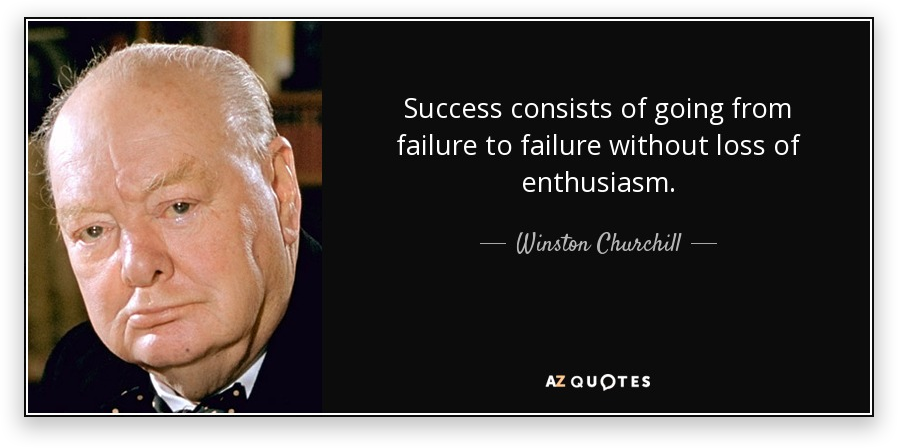


 3. Failure to Lead
3. Failure to Lead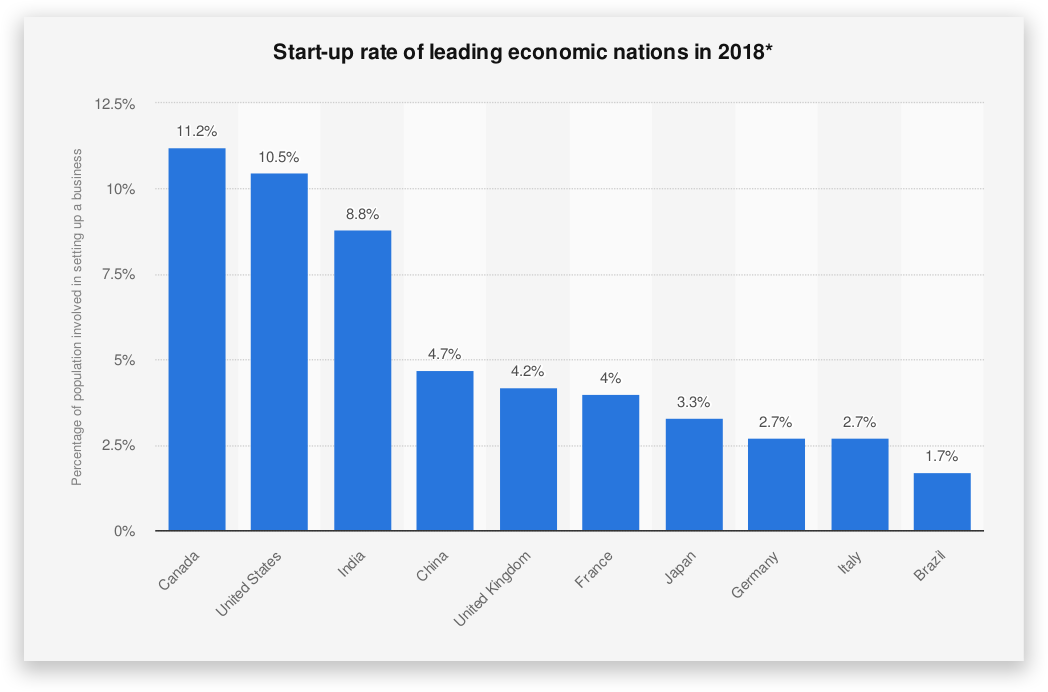


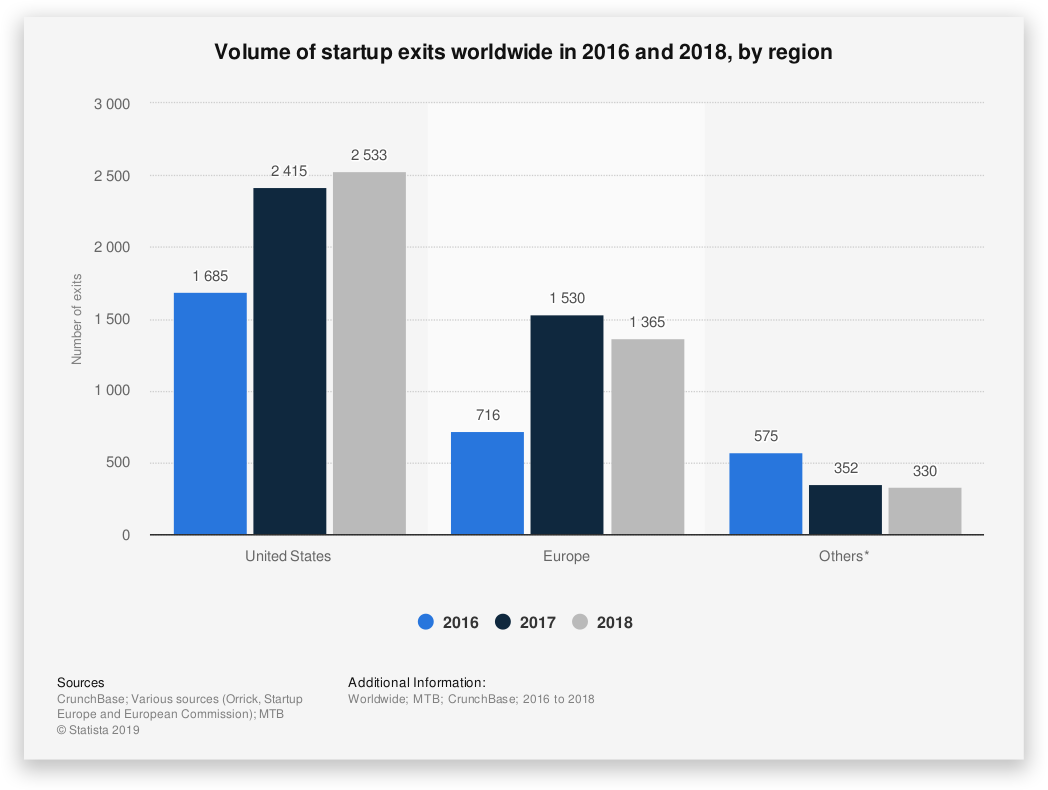
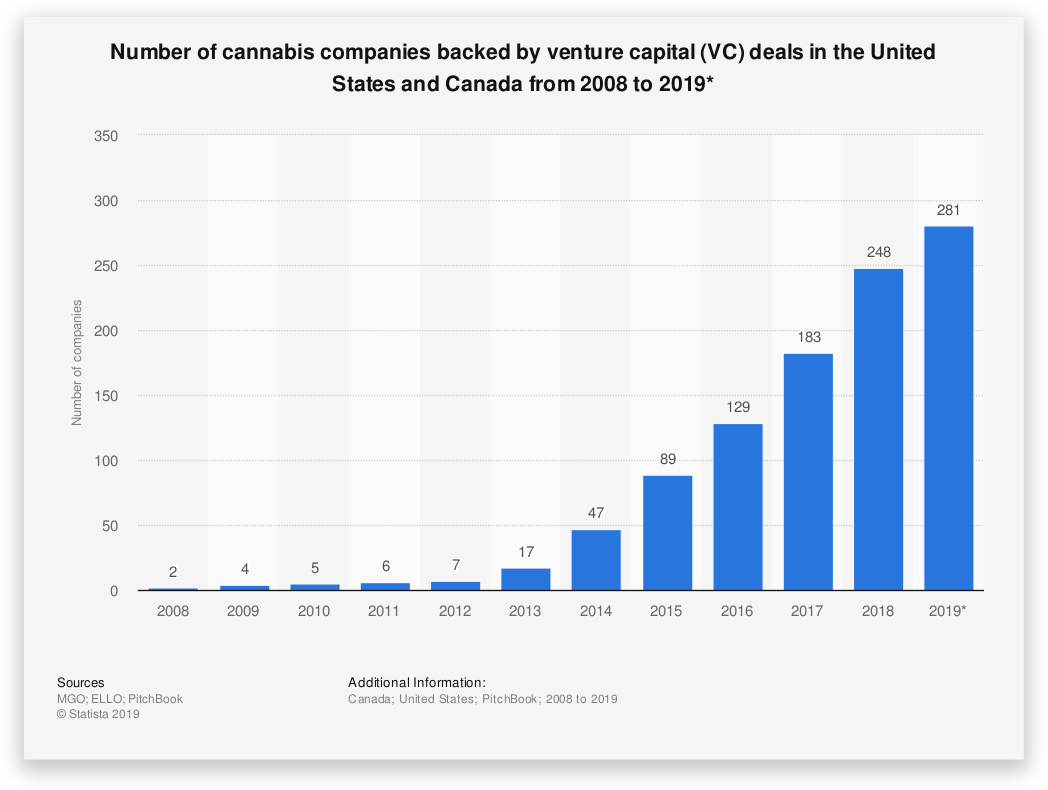

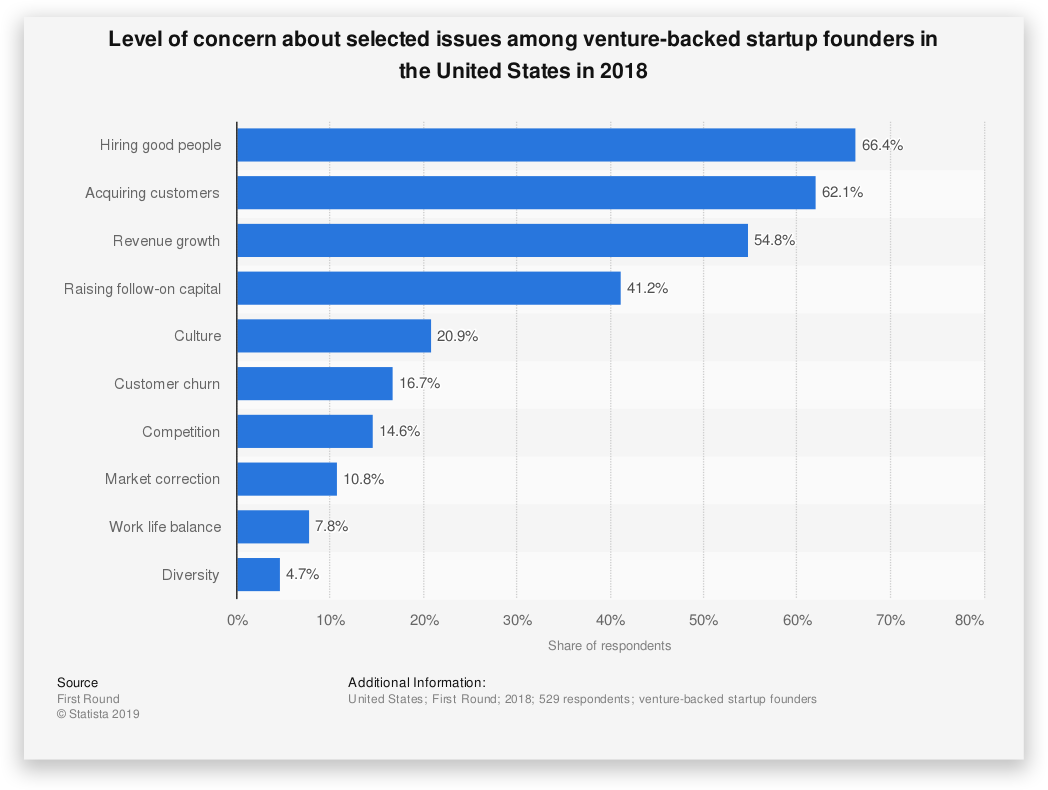



 Go International
Go International

